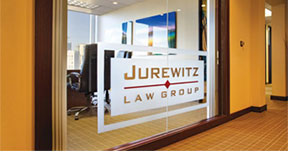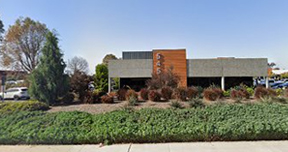When you suffer an injury on someone else’s property, holding the responsible party accountable often requires proving negligence. One crucial aspect of premises liability claims is whether the property owner had notice of the hazard that caused the injury. This boils down to two legal concepts: constructive notice vs. actual notice. Understanding these terms can significantly impact the outcome of a premises liability case.
What Is Actual Notice?
Actual notice occurs when a property owner or their representative is directly aware of a hazardous condition. This could mean the owner personally observed the hazard or someone else informed them about it. For example, if an employee spills water on a supermarket floor and immediately informs their manager, the store now has actual notice of the hazard.
To prove actual notice in a premises liability case, you must demonstrate that the property owner or responsible party knew about the danger and failed to address it within a reasonable timeframe. Evidence such as surveillance footage, employee reports, or eyewitness accounts often plays a critical role in establishing actual notice.
What Is Constructive Notice?
Constructive notice, on the other hand, arises when a property owner should have known about a hazardous condition through reasonable diligence, even if they did not have direct knowledge. For instance, if a spill occurs in a grocery store and remains unaddressed for hours, the property owner could be deemed to have constructive notice of the hazard.
In these cases, courts often examine factors like the amount of time the hazard existed, the nature of the property, and whether the owner followed proper inspection and maintenance protocols. Constructive notice does not rely on someone reporting the danger; instead, it hinges on whether a reasonable property owner would have discovered and addressed the issue.
Key Differences Between Constructive and Actual Notice
Understanding the distinction between constructive notice and actual notice is essential when determining liability in a premises liability case. Here are the primary differences:
- Knowledge – Actual notice requires direct knowledge of the hazard, while constructive notice involves failing to discover a hazard that a reasonable person would have identified.
- Evidence Required – Proving actual notice often involves showing direct communication, reports, or observations. Constructive notice cases rely on evidence like inspection records or the duration of the hazard’s existence.
- Standard of Proof – Constructive notice requires establishing that the property owner acted negligently by not inspecting or maintaining their premises adequately.
Examples of Constructive and Actual Notice in Premises Liability
To better understand these concepts, let’s look at a few examples:
- Actual Notice – A restaurant owner sees a broken chair during a routine walkthrough but neglects to repair it. If a patron later gets injured using that chair, the owner has actual notice of the danger.
- Constructive Notice – A puddle of water forms in a store aisle due to a leaky roof. If the puddle remains visible for hours without any cleanup or warning signs, the property owner may be deemed to have constructive notice of the hazard.
How Notice Impacts Premises Liability Cases
In premises liability cases, the injured party must prove that the property owner was negligent. Notice—actual or constructive—is key to demonstrating that negligence. Holding the owner accountable for the unsafe condition without proof of notice becomes challenging.
Proving Actual Notice
To establish actual notice, your attorney may use:
- Incident reports show someone documented the hazard.
- Witness testimony from employees or customers who informed the property owner about the hazard.
- Surveillance footage shows the owner or employees interacting with the hazard.
Proving Constructive Notice
Constructive notice cases often require:
- Evidence that the hazard existed long enough that someone should have discovered it through reasonable care.
- Proof that the property owner failed to follow regular maintenance or inspection protocols.
- Expert testimony on what a reasonable property owner would have done in similar circumstances.
The Role of Inspections and Maintenance
Property owners have a legal duty to inspect and maintain their premises to prevent injuries. Regular inspections help identify potential hazards, reducing the risk of accidents and lawsuits. When owners neglect these responsibilities, they risk being held liable for injuries caused by their oversight.
In cases involving constructive notice, the court often evaluates whether the property owner had reasonable systems in place to detect hazards. If a business fails to conduct routine inspections, clean up spills, or repair damaged flooring, it becomes easier to argue that they should have known about the dangerous condition.
How a Premises Liability Lawyer Can Help
Concepts like constructive notice and actual notice require a skilled legal advocate. A knowledgeable Florida premises liability lawyer can:
- Investigate the circumstances of your injury.
- Gather crucial evidence, such as inspection logs or surveillance footage.
- Consult with experts to determine whether the property owner acted reasonably.
- Build a compelling case to establish the owner’s notice of the hazard.
Common Premises Liability Claims
Notice plays a significant role in various types of premises liability cases, including:
- Slips and Falls – Hazards like wet floors, icy sidewalks, or uneven surfaces often form the basis of slip and fall claims.
- Negligent Security – Property owners who fail to provide adequate lighting or security measures may be liable for crimes committed on their premises.
- Falling Objects—Injuries caused by improperly secured merchandise or signage often raise questions about whether the property owner adequately inspected their premises.
- Dog Bites – While not always tied to notice, these cases may involve proving the owner knew their pet posed a danger.
Each scenario may require evidence of actual or constructive notice to establish liability.
Call Jurewitz Law Group Injury & Accident Lawyers for Help with Your Premises Liability Case
Premises liability cases are complex, often hinging on whether the property owner had notice of the hazardous condition. Proving notice—whether constructive or actual—requires careful investigation, thorough evidence collection, and a deep understanding of the law. A Tampa premises liability lawyer can guide you through this process, ensuring that your case is built on solid evidence and legal expertise.
At Jurewitz Law Group Injury & Accident Lawyers, we help injured victims hold negligent property owners accountable. We proudly service Tampa, San Diego, Mission Valley, and Carlsbad, CA. Don’t wait to take action if you were injured on someone else’s property. Call us today at (619) 233-5020 or contact us online to schedule a consultation.
We’re committed to helping you recover the compensation you need to move forward.
Related Posts:
Premises Liability Law – Legal Information for Injured Victims
Proving Negligence after Falling on a Slippery Floor in San Diego
Insurance Company Tactics in a San Diego Slippery Floor Injury Claim
Can You Get Punitive Damages for Negligence in Personal Injury?


